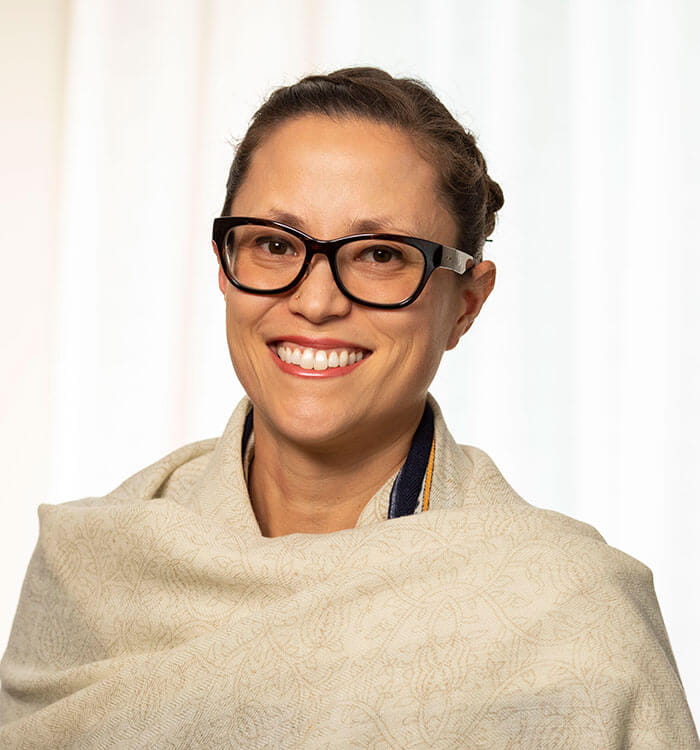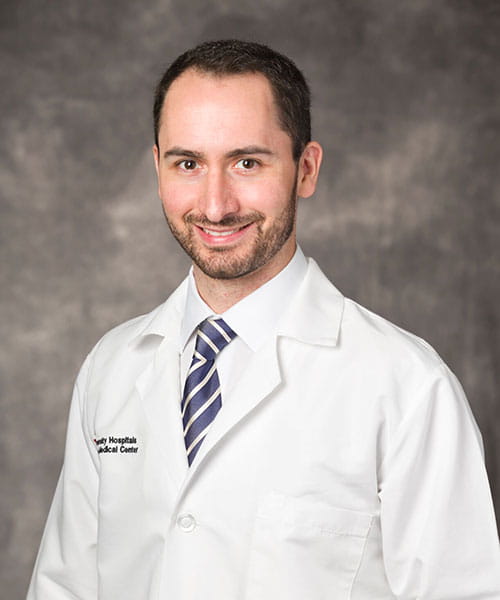Dr. Jennifer Villwock Discusses Her Role as Incoming Inaugural Vice Chair of Research for ENT Institute
July 23, 2025
Innovations in Ear, Nose & Throat | Summer 2025
Surgeon-Scientist Jennifer Villwock, MD, has been appointed the inaugural Vice Chair of Research at the University Hospitals Ear, Nose & Throat Institute. Starting September 1, she will join the faculty and divide her time between University Hospitals Cleveland Medical Center and the Louis Stokes Cleveland VA Medical Center.
 Jennifer Villwock, MD
Jennifer Villwock, MD Kenneth Rodriguez, MD
Kenneth Rodriguez, MD“Dr. Villwock is a fellowship-trained sinus surgeon and a true collaborator who brings a wealth of knowledge in managing millions of dollars in research funding and infrastructure,” says Kenneth Rodriguez, MD, Chief of Rhinology and Anterior Skull Base Surgery and Vice Chair of Clinical Operations within the UH ENT Institute and an Associate Professor at Case Western Reserve University School of Medicine. “Having someone step into this newly created role with such diverse accomplishments creates an exciting opportunity to advance hypothesis-driven research and foster cross-institutional collaboration here in Cleveland.”
Dr. Villwock joins University Hospitals from the University of Kansas Medical Center, where she serves as Vice Chair of Research and Innovation and a Professor of Otolaryngology - Head and Neck Surgery. She is also the Section Chief of Otolaryngology at the Kansas City VA Medical Center. She leads novel research funded by multiple grants from the National Institutes of Health (NIH) and the Department of Defense (DOD).
After studying cellular and microbiology at the University of Michigan, Dr. Villwock earned her medical degree from Michigan State University College of Human Medicine. She completed an Otolaryngology Residency at State University of New York Upstate Medical University prior to completing a Clinical Fellowship in Rhinology and Skull Base Surgery at the University of Kansas Medical Center. Dr. Villwock is certified by the American Board of Otolaryngology and is a fellow of the American Academy of Otolaryngic Allergy.
What Brings You to Cleveland?
I am excited to join the rich tradition of interdisciplinary research at University Hospitals and its affiliated institutions. I enjoy building programs and am looking forward to learning ways I can help extend the department’s research presence. There is tremendous opportunity and enthusiasm for collaborative, patient-impacting programs. I have been impressed with the culture of the institution and our shared big-picture vision of serving the community while pursuing meaningful scientific breakthroughs. Joining UH also feels like a homecoming as my family and I will be joining an extensive family network in the area.
What is the Focus of Your Research?
Most of my research falls under the umbrella of expanding patient-centric, accessible medicine. There is a lot of focus on topics like advanced genomics and proteomics, and there is a definite need for precision medicine within that context. However, we also know that too often we are failing to meet patients where they are and need to think intentionally about how we can positively impact care and outcomes for our patients and communities now. Many evidence-based, cost-effective diagnostic and therapeutic options have not been optimally leveraged at this point. That is where my work lives.
Are there NIH-funded Projects that will Transition with you to University Hospitals?
Yes, I am bringing my research portfolio to Cleveland. One of those projects aims to understand how patterns of olfactory performance – also known as olfactory phenotypes – can be used to predict cognitive impairment. We are also interested in how these phenotypes correlate with other indicators of cognitive impairment, such as plasma biomarkers of Alzheimer’s disease. By asking individuals to complete the olfactory test that my team created and patented, we hope to develop reliable and accurate predictive models of dementia risk or the likelihood of progression to Alzheimer's disease. The success of this approach has the potential to significantly impact public health. For example, we do not have great therapies for neurodegenerative diseases like Alzheimer’s disease, and one thought is that we are simply diagnosing people too late. If we can offer patients a non-invasive smell test that helps us detect people sooner along that cognitive impairment spectrum disease, a window of opportunity opens to implement treatments and interventions before it is too late.
How Does Your Study of Sensory Perception Relate to Your DOD-funded Research?
One of the frustrating aspects of clinical medicine is that we do not have reliable markers for predicting recovery trajectories for individuals who suffer a traumatic brain injury. Two patients with the same mechanism of injury might experience very different recovery trajectories over time. For example, a year after the same injury, one may be completely fine and the other struggling with headaches, fatigue and brain fog. This project utilizes a multisensory screening approach, expanding beyond olfactory tests to include assessments of hearing and vestibular system performance. Our goal is to understand how declines in sensory performance can help predict the severity of traumatic brain injury as well as recovery outcomes at two years. If we have a better understanding of who is likely to experience lingering issues, we can focus efforts on targeted cognitive or physical rehabilitation for this population.
Will You Establish a Clinical Practice Alongside Your Research Leadership?
Yes, I will see patients on Cleveland’s West Side. Much of my clinical practice involves pathologies such as chronic sinusitis, nasal polyps or allergic rhinitis. I also plan to develop an immunotherapy practice, starting with establishing a testing pipeline for people who have penicillin as a listed allergen. The literature indicates that approximately 90 percent of people who have a penicillin allergy in their chart do not have a true allergy. This has significant implications for antibiotic selection, as well as the risk of poorer outcomes, increased side effects and higher costs. We plan to offer a service where patients can come in, undergo a skin test and potentially take an oral dose of penicillin if the skin test is negative. If we can eliminate penicillin as an allergy risk, we can provide patients with better antibiotic choices and, by extension, better long-term health results
To reach the UH Ear, Nose & Throat Institute, call 440-496-5751.
Contributing Experts:
Jennifer Villwock, MD
Otolaryngology – Head and Neck Surgery
Incoming Inaugural Vice Chair of Research
University Hospitals Ear, Nose & Throat Institute
University Hospitals Cleveland Medical Center
Kenneth Rodriguez, MD
Chief of Rhinology and Anterior Skull Base Surgery
Senior Attending Physician, Otolaryngology
Vice Chair Clinical Operations
University Hospitals Ear, Nose & Throat Institute
UH Physician Informaticist
University Hospitals Cleveland Medical Center
Associate Professor
Case Western Reserve University School of Medicine


